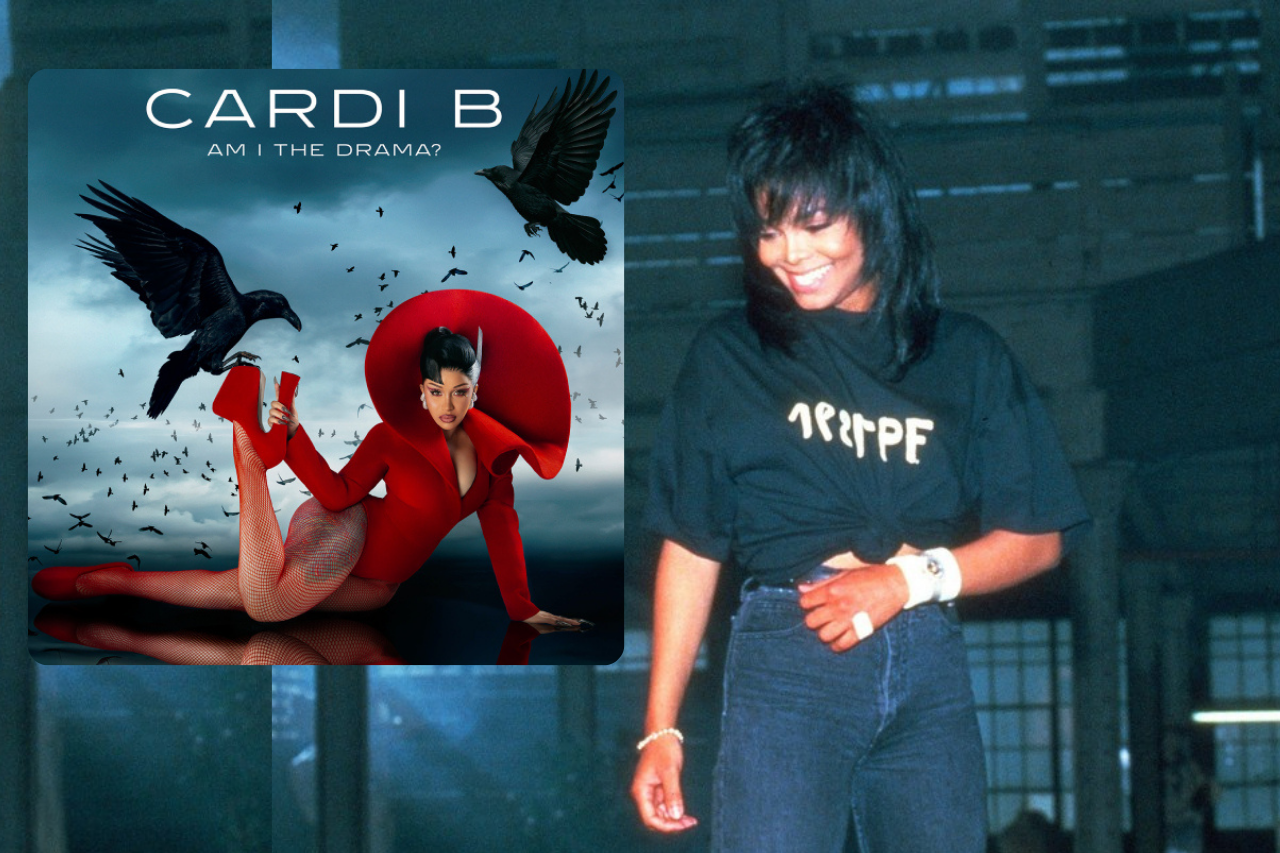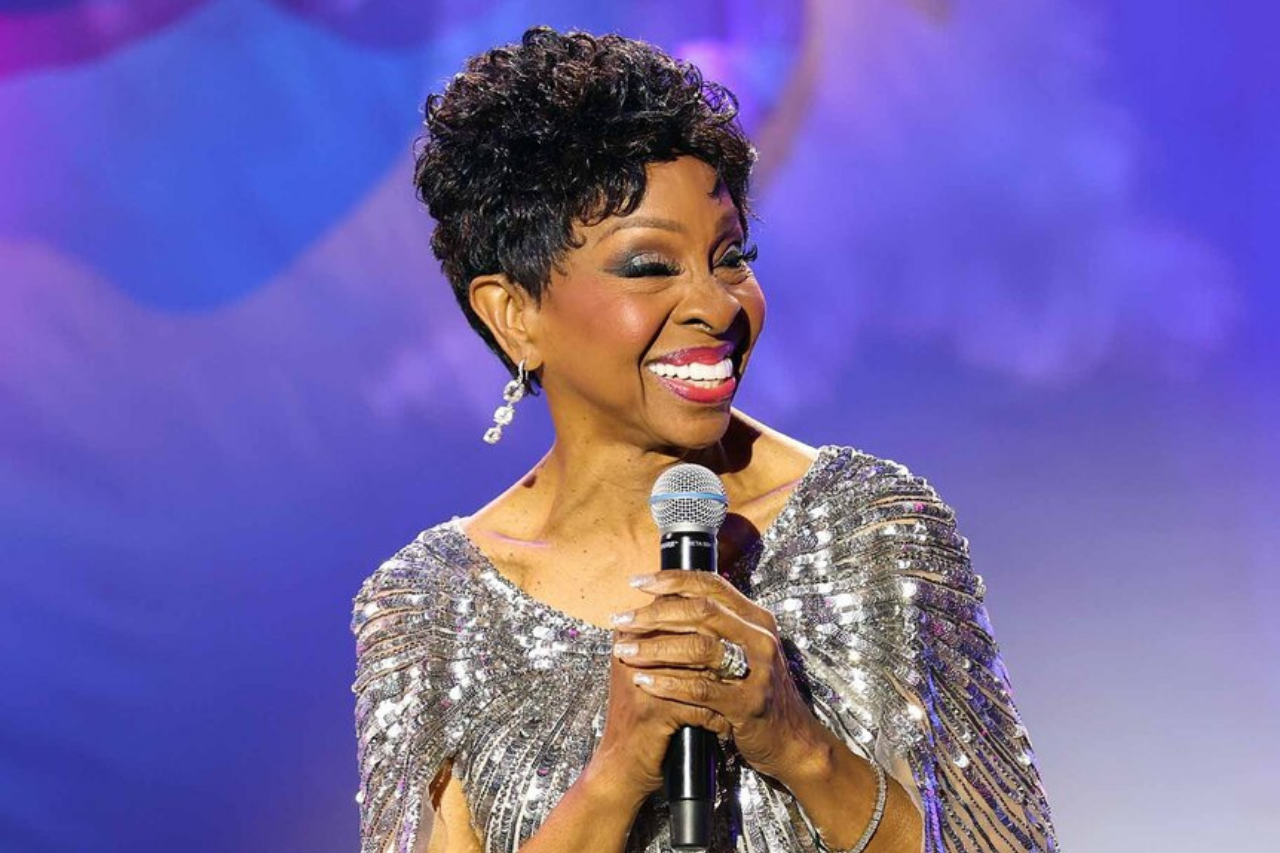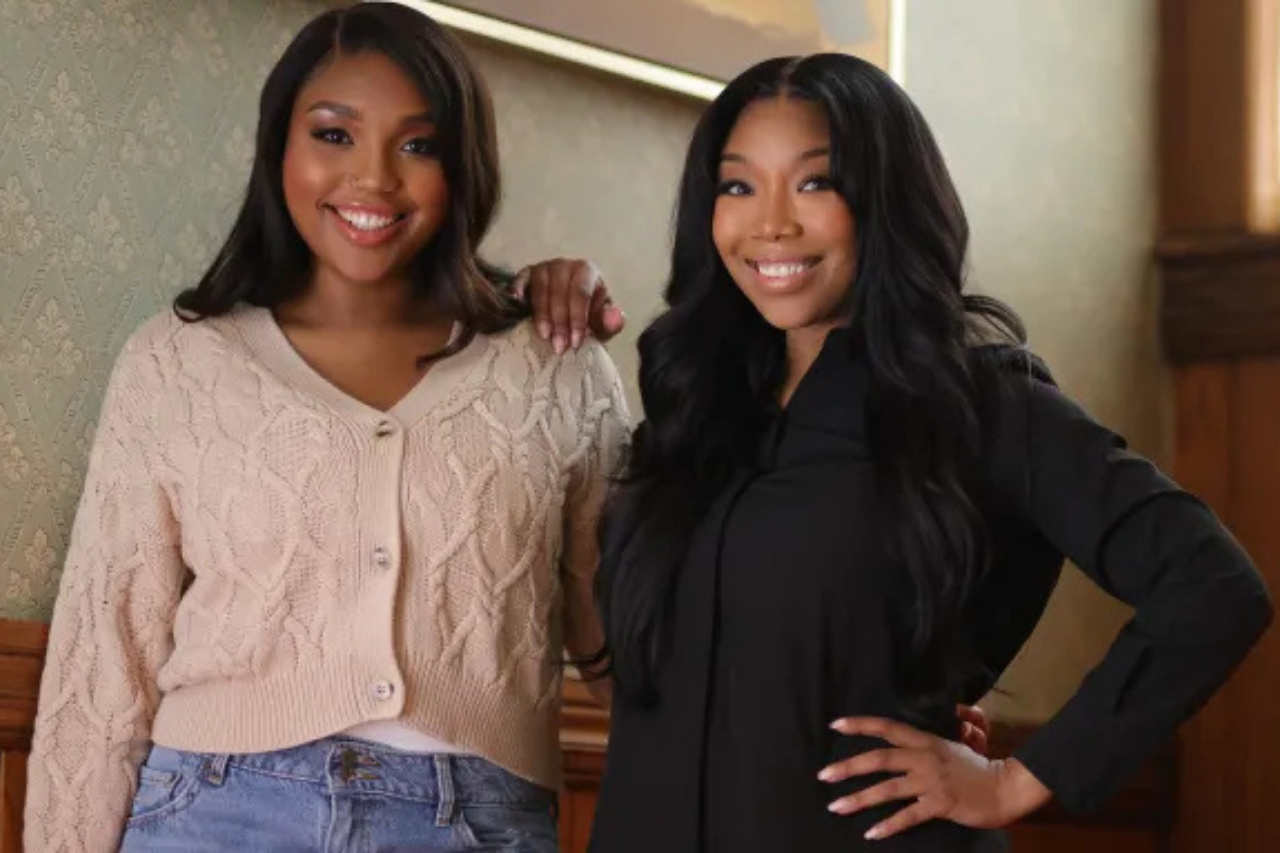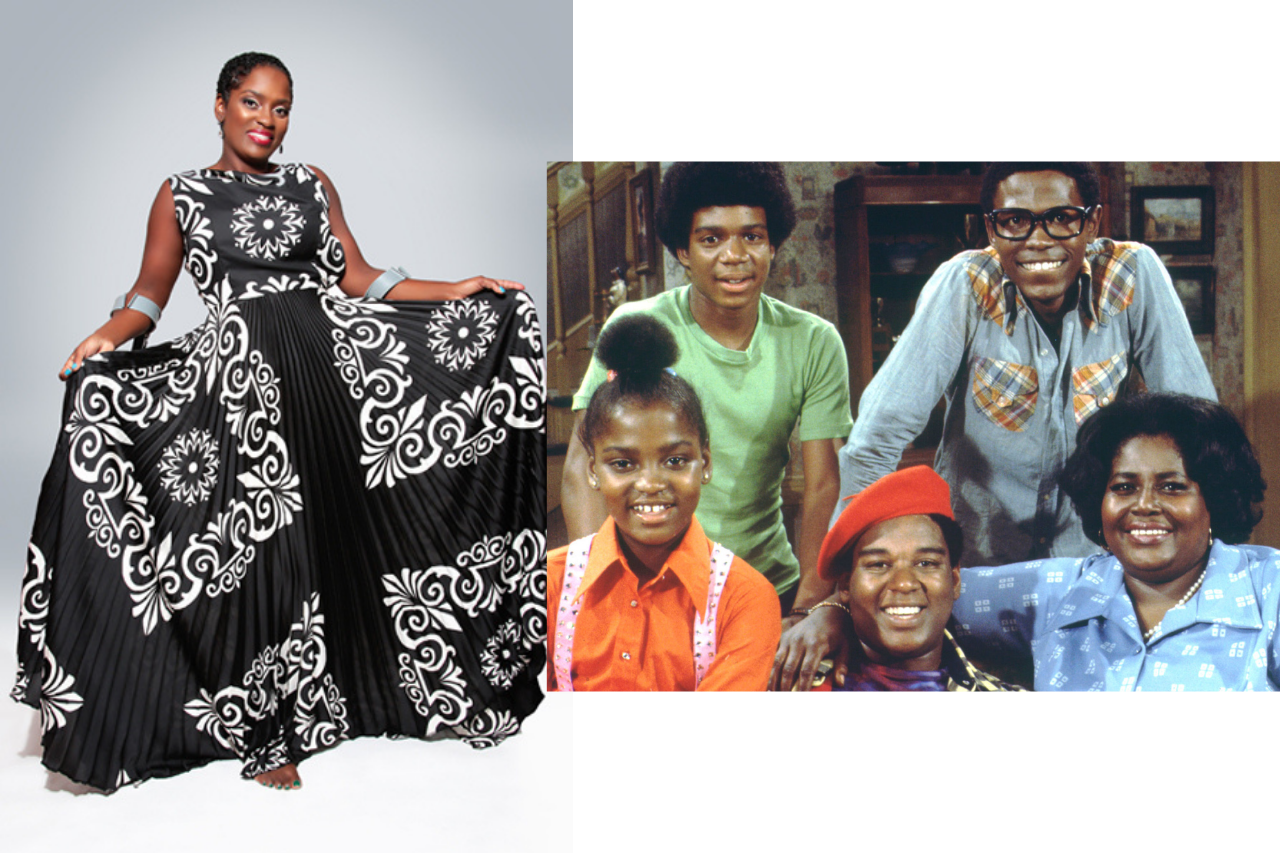For many in Gen X, Janet Jackson isn’t just a voice on a track. She’s the rhythm of one’s youth, the songwriting that framed teenage bedroom walls, the choreography played out on TV screens, and the handshake you felt with a generation that dared to demand more control. When Cardi B dropped her much-anticipated album and one track was billed as featuring Janet Jackson, many older listeners pictured a cinematic crossover: new vocals, a visual moment, a shared studio.
What arrived instead is a sample, a piece of Janet’s recorded past woven into a present track. And that gap matters. It reveals how featuring has shifted under streaming economies, how Gen X hears music differently today, and how artists and labels are walking a tightrope between homage and expectation.
To understand the controversy, it helps to define:
- Sampling means using a portion (a hook, melody, beat, or vocal line) of an existing recording, cleared (licensed) from the original rights-holders, often altered or looped.
- Feature classically means a guest artist recording new material—new vocals, a verse, or substantially collaborative input.
In many past cases, artists were transparent about these differences, but that boundary is becoming blurrier. Marketing blur, metadata gloss, and expectation gaps have made fans much more alert and much more likely to feel let down when what is billed as a feature isn’t what they expected.
To Gen X, Janet Jackson is one of our anchors. Her music soundtracked the MTV boom, the cassette-to-CD transition, the age of liner notes, album art, and collectible physicals. Her discography isn’t some distant catalogue; it’s personal memory.
When fans see “feat. Janet Jackson” in 2025, many expect more than a sample. They expect an echo of that shared cultural moment: fresh vocals, new production, a lineage continued. So when the “featuring” turns out to be a sample, it feels like the label changed the nameplate without building the house.

Contrast that with how younger listeners may interpret feat. today. For them, a “feature” might only mean inclusion, even if it’s a sample, interpolation, or AI-sourced voice. The layer of meaning has shifted, and Gen Xers are uniquely placed to notice.
Since the drop of “Am I the Drama,” much of the initial conversation zeroed in on Cardi B. Fans who had been primed for a cross-era duet reacted sharply, framing the release as a bait-and-switch. Social posts and comment threads filled with disappointment and, at times, outright accusations that the marketing had been misleading. That reaction says as much about shifting expectations as it does about the artist herself.
Viewed through a generational lens, Cardi B’s decision to credit Janet Jackson as a feature, even when the track uses a sample, fits into a larger pattern of how music is rolled out in 2025. In an era where nostalgia is a powerful marketing tool, invoking an iconic name can serve as both a homage and a hook. For Gen X, Janet’s voice carries a lifetime of cultural weight; for younger listeners, a sample may be another way to discover a legend’s sound. Cardi’s team is navigating that overlap, using familiar cues to draw in multiple age groups at once.
This approach carries clear risks. Older fans may feel that the meaning of “featuring” has been diluted, while younger audiences are largely unfazed by blurred lines between samples and collaborations. Yet it also reflects a practical reality of the streaming economy, where recognizable names and sounds cut through an overwhelming flow of new content. In that sense, the strategy is neither purely deceptive nor purely innovative; it is a sign of the industry’s evolving norms, where crediting practices lag behind listener assumptions.
From a Gen X point of view, the takeaway is less about blaming Cardi B and more about recognizing a generational shift in how music is packaged and understood. The same tactic that feels like a letdown to one cohort may feel like a respectful nod to another. The Janet “feature” moment is a case study in how nostalgia, marketing, and audience expectations now intersect.
Gen X grew up in an era when musical credits were tangible: you bought the vinyl, read the names of producers and guest artists. MTV premieres revealed studio collaborations. Listening was slower, curated, and somewhat sacred. A “feature” meant a shared studio session.
Today’s music environment is fast, layered, and remixed. Platforms sample, literally and metaphorically. Features are porous: sometimes real vocals, sometimes interpolation, sometimes homage. The line between collaboration and quotation is less distinct.
Gen Xers now listen cross-generationally. We stream, create playlists, but we carry with us habits from analog days: we dig credits, we expect context, we have sharper ears for what featuring once meant.

Mediaculture’s recent analysis of Gen X media habits calls them “bridge listeners” — equally comfortable with old and new, skeptical but curious. Media Culture Spotify has also noted that people feel the strongest nostalgia for songs popular in their late teens — meaning the Janet era still echoes loud in Gen X listening patterns.
Mediaculture’s recent analysis of Gen X media habits calls them “bridge listeners” — equally comfortable with old and new, skeptical but curious. Media Culture Spotify has also noted that people feel the strongest nostalgia for songs popular in their late teens — meaning the Janet era still echoes loud in Gen X listening patterns.
In today’s music market, nostalgia is one of the strongest levers. Streaming dynamics reward familiar hooks and emotional resonance. Back catalogues remain powerful drivers of listening volume even decades later.
Luminate’s midyear report in 2025 confirmed that while streaming volume is still rising globally, growth is slowing — and catalog music is holding up stronger than newer releases. AP News
Their data also revealed that pop songs from the 2007–2012 “recession pop” era saw ~6.4% stream volume growth in the U.S. — showing that listeners gravitate toward the eras that shaped them.
TikTok’s role is pivotal. In the U.K., 19 of the top 50 TikTok tracks were over five years old — compared with just 8 in 2021. The Guardian Globally, old tracks are resurfacing in new trends, reminding younger listeners that identity often cycles.
For Gen Xers, that phenomenon is odd but thrilling: your past becomes a new discovery for others. A Janet sample in 2025 isn’t just a borrowed brand; it’s a revival — “the new old” getting air again.
If you grew up reading liner notes, the phrasing “feat. Janet Jackson” feels loaded. It suggests active participation. When those expectations aren’t explicitly addressed, disappointment is inevitable.
In many streaming interfaces, the full credits (songwriting, producers, sample sources) are tucked away. For Gen X listeners who hunt for lineage, that invisibility feels like erasure. A sample deserves clarity; a misattributed feature feels like misdirection.
If every new record leans on nostalgic sampling, originality risks being overshadowed. That’s not always a bad thing because sampling can be creative, but Gen Xers have seen decades of cycles and recognize when homage turns into an echo chamber.
In that context, with hype, backlash, and speculation swirling around AM I THE DRAMA?, the actual performance metrics tell their own story and show how both the record and Janet Jackson’s credited track are landing in real time.
Opening day / first 24 hours
- On Spotify alone, the album pulled 14.7 million streams on its first day, making it one of the stronger rap album debuts in 2025.
- Chart data also reports a figure of 14.68 million first-day streams on Spotify.
Billboard 200 Projections & Certification
- Analysts are projecting a debut at No. 1 on the Billboard 200, estimating 125,000 to 150,000 total units (combining streaming, sales, etc.) in the first week. Hypebeast
- The album has already been certified Platinum by the RIAA, largely because it includes past hits (“WAP,” “Up”) that already carried weight. Hypebeast+1
- In its first three days, the album reportedly generated 78.3 million on-demand US streams.
Longer-term & comparative streaming totals
- “Am I the Drama?” has pulled 2,286,259,631 streams on Spotify (as of 9/26/2025) and is ranked #10 among the most-streamed albums of 2025. ChartMasters
- The album’s Wikipedia entry also confirms that Am I the Drama? was certified platinum on day one, with the inclusion of legacy tracks helping push that threshold. Wikipedia
So, in short: the album is off to a strong start, riding both new material and legacy hits to early success.
Here’s where things get murkier, because streaming platforms typically don’t break out “feature vs sample” segments in their public metrics. Still, a few data points hint at how Janet’s presence is resonating:
- After the release, Janet Jackson reportedly gained over 250,000 new listeners on Spotify. The spike is being attributed to her involvement in the track “Principle” on Am I the Drama?.
- On “Principle,” Janet Jackson is credited in the track listing.
- More broadly, SongStats lists Janet Jackson’s streaming and artist analytics (which will eventually capture any bump tied to this moment).
From what we see, the boost in new listeners suggests her catalog is benefiting from the association. Because the data doesn’t isolate how many streams of Am I the Drama? are tied to the Janet “feature”, or how many plays of “Principle” are driven by listeners who specifically cared about Janet—it’s hard to quantify her exact impact on the album’s numbers.
Note: Platform APIs do not publicly break out “sample vs. new vocals” plays. Track-level ranks (Apple Music) and overall album streams (Spotify) are the best open signals for how the “feature” is traveling.
What this moment ultimately exposes is the gap between the way music evolves and the way audiences expect it to behave. Cardi B’s latest release embodies a period where one song can function simultaneously as culture, marketing, legacy, and remix. Janet Jackson’s sound gains new life in younger ears, which has real value, but it also highlights the need for greater transparency so that legacy remains a living presence rather than a decorative reference.
For Gen X listeners, the track plays like a prism bending their own memories into something unfamiliar. For younger audiences, it can act as a doorway to discover an artist who defined an earlier era. The true significance lies in that tension, where nostalgia meets newness and each generation hears something different.
AM I THE DRAMA — Live Snapshot
Album: AM I THE DRAMA — released September 19, 2025
Artist: Cardi B
Key Track: “Principal (feat. Janet Jackson)”
First-day Spotify streams (album): ~14.7M
Billboard 200 outlook: Projected No. 1 debut (week 1)
Apple Music U.S. rank (song): “Principal” currently charting in Top 100 (positions fluctuate)
Momentum signals: Cardi B ~32.6M Spotify monthly listeners; Janet Jackson ~7.5M
Data reflects public charts and editorial reporting available today; ranks update frequently on streaming platforms.
Discover more from MidScroll
Subscribe to get the latest posts sent to your email.



